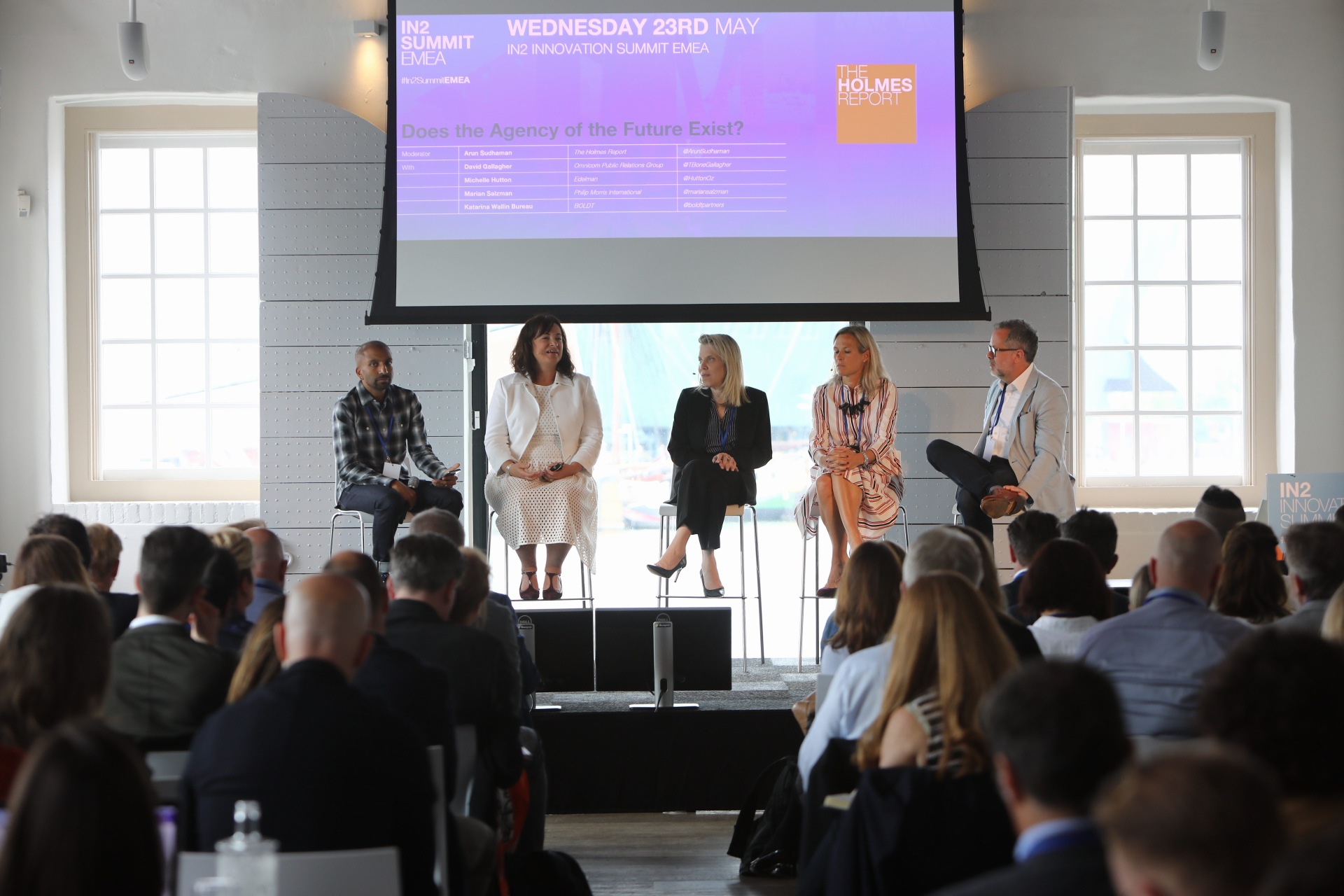Maja Pawinska Sims 25 May 2018 // 5:27AM GMT

AMSTERDAM — Agencies need to “go in deeper and plan to be around longer”, according to Philip Morris International SVP Communications Marian Salzman, who joined the tobacco company in her first in-house role last month after nine years at Havas, latterly as North America CEO.
Salzman was speaking this week at the 2018 In2 Innovation Summit EMEA in Amsterdam, on a panel discussion entitled ‘Does the Agency of the Future Exist?’ She said there was an opportunity for next-generation agencies to be an extension of the client: “I want someone who is thinking about my business the way I am, but with a bigger and better brain.
“Time gets in the way in agencies: I’d rather they came back with an innovative solution than selling me eight hours a day. We need to stop thinking of agency as a service offer and start thinking about how you really partner with your client.”
Salzman said she believed disruption of the agency model was close: “When agencies start to think: ‘how do we make it worth their while to increase our fees? How do we flip our business model?’ it’s a transformative moment. I’m happy to buy genuinely bright, super-engaged, high-calibre specialists and dramatically deep insight in health, for instance, and as we move away from paid advertising and need more of us in the earned world, I see transactions coming up like clients buying small specialist shops to bring that expertise in-house.”
And she added, on her move from agency to in-house: “I always thought I understood what clients wanted, and five weeks into the job, I know I was so dead wrong. As an agency person I was always saying ‘let’s be strategic for a moment’, and as a client that’s the last thing I want.”
The other speakers on the panel were David Gallagher, Omnicom’s international president of growth and development, Edelman MD of global clients Michelle Hutton, and Katarina Wallin Bureau, partner at new European communications and business strategy group BoldT, who said as communications becomes ever more important, the evolution of the traditional agency model was a priority: “One of the biggest things we are grappling with is ‘time or consultancy?’ As communicators, we have the potential to help clients tackle global problems and with that comes huge responsibility. We need to fundamentally rethink the agency service model.”
Wallin Bureau, who spent several years at Burson-Marsteller, suggested aping the management consultancy model would add greater depth of understanding among agency teams: “In PR agency, teams of junior consultants have 8-10 clients each and it’s impossible to get under the skin of what clients’ issues really are. In management consulting, as a junior consultant you have one client and spent 3-4 days a week with them; you live and breathe their business and have a completely different understanding of the problem.”
At Edelman, Hutton said there were three agency models the firm was currently looking at: “Organisation and structure, and how from a business perspective we drive growth; what our people want, and what will inspire and engage them; and what clients will need from us in the future and how we invest in that and get ahead of the curve. We’re constantly experimenting and taking risks, but it’s a journey.”
Hutton said she thought the main source of disruption in the industry would come from technological innovation: “We’re exploring a smarter, better data offer, looking at investment and development opportunities that will be central to our future growth. We’ve recruited around 600 people over the past little while in our creative, digital, planning and strategic capability and we’re working hard to integrate them into the business, although data and analytics can be based anywhere in the world. It comes at a cost but we’re trying to play the long game to bring the level of specialism into the business that is important to clients.”
In answer to a related question around the growing number of ‘virtual agencies’ made up of experienced freelancers, Gallagher said: “It’s definitely the start of something. Virtual agencies seem to work well, they recognise a need in marketplace, as a lot of agencies have trouble hanging onto people in the peak or middle of their career. Some will stay virtual and some will be absorbed into bigger agencies.”
For all the current conversation around potential new agency business models, Gallagher warned that disruption was more likely to be imposed on the industry from outside: “I think the agency of today will continue to be the agency of tomorrow is because it’s a good, flexible business model where big, small and medium can co-exist, barriers to entry are low and you can practice it anywhere at any scale. But we are due for major disruption, and that’s usually not done by establishment players.”
He gave two examples of recent developments that could disrupt the traditional PR agency model: Spry, a mobile app developed by two former Porter Novelli execs that allows SMEs and agencies to quickly commission PR content from freelancers, and Maslansky + Partners’ Dynamic Response — an interactive tool that uses data and patterns from aggregated crisis and issue responses to help communicators quickly formulate messaging when a crisis hits.
Hutton said she had concluded that experimentation around the right agency model came down to leadership: “I’m hopeful that as an industry we can really embrace change, but fearful because it still looks like it did when I started out. Successful agencies need leadership more than ever. We need people who are brave, bold, who have a vision for how to evolve and change and disrupt. Gone are the days of running agencies through a spreadsheet. Never has good, solid, emotionally-driven leadership been so importa


































.jpg)

















